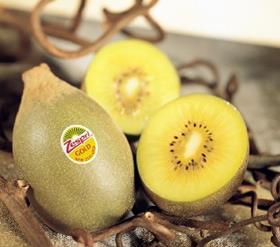
New Zealand kiwifruit marketer Zespri is allocating 20 per cent of its South East Asian marketing budget to increasing sales in the Philippines, according to market manager Daniel Mathieson.
The market currently only represents 4 per cent of Zespri’s sales in South East Asia, but presents significant growth potential, said Mr Mathieson, especially as tariffs drop due to the New Zealand/Australia/ASEAN free trade agreement.
Promotions in the Philippines will be focused on supermarkets, which account for the majority of kiwifruit sales in the country, reported the Business Mirror. The campaign will push the health aspects of the fruit.
Sales of Zespri kiwifruit increased 200 per cent to 3.3m pieces in 2008 on the back of the first promotional efforts.
“We’re hoping to double that this year,” said Mr Mathieson, saying Zespri plans on kiwifruit becoming “part of the emerging Filipino diet.”
“We’re committed to growing our market here,” he said. “We see a lot of growth potential.”
The majority of kiwifruit sold in the Philippines, about 90 per cent, are the Gold variety.
According to Elite Fruit Marketing, one of the two Philippine importers of Zespri kiwifruit along with Beauchamp, 80 per cent of kiwifruit is sold to supermarkets, 10 per cent to restaurants and 10 per cent to wholesalers.
“We imported 30,000 crates last year and we’re doubling the imports this year,” manager Kingson Chan told the Business Mirror.
The price of New Zealand kiwifruit should drop on retail shelves in coming years; at present, they are subject to a 7 per cent tariff, but as part of the recent New Zealand/Australia/ASEAN free trade agreement, that will drop to 5 per cent this year, 3 per cent next year and zero in 2011.
Mr Mathieson said that should help boost sales in the Philippines, a sentiment Zespri CEO Lain Jager agrees with.
“Free trade is fantastic for us, particularly into Asian markets,” he told Fruitnet earlier this year.
“The tariff reductions come in over time, and we’re growing rapidly off a low base in South East Asia. It means we can put a more competitive offer in, and we can sell more volume.”






No comments yet